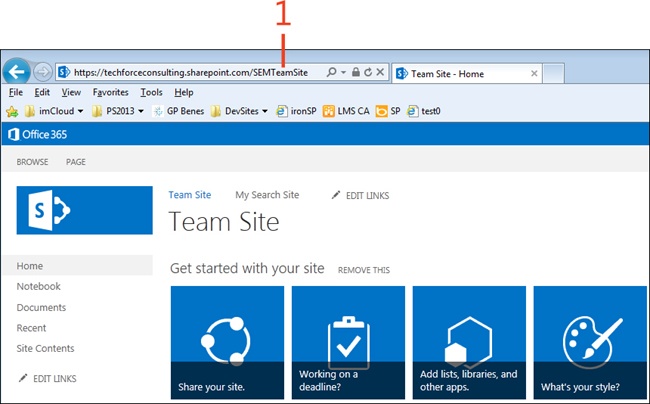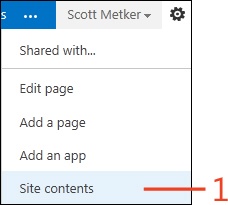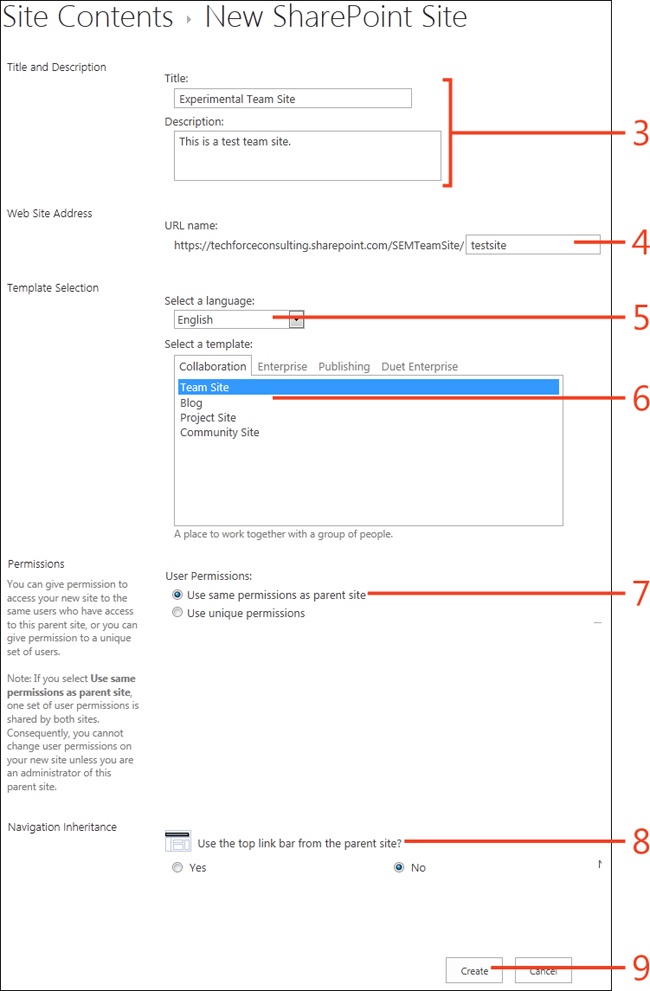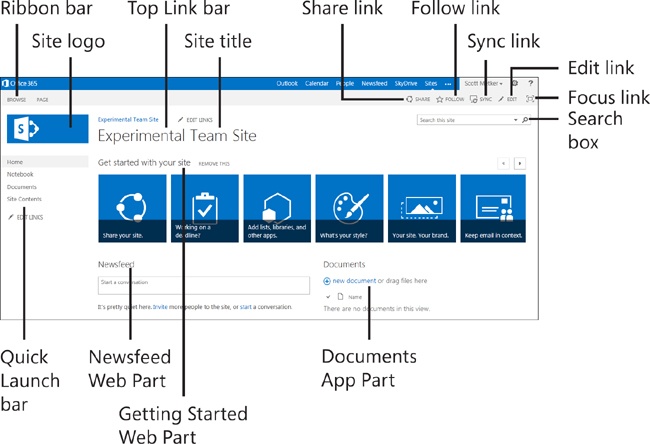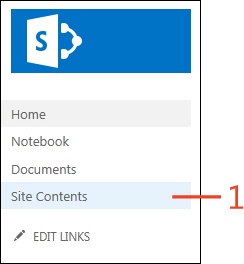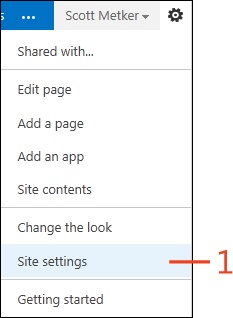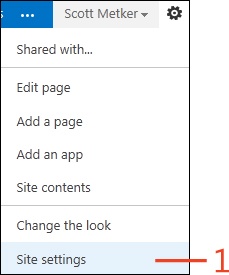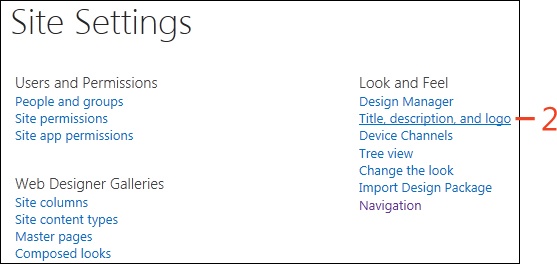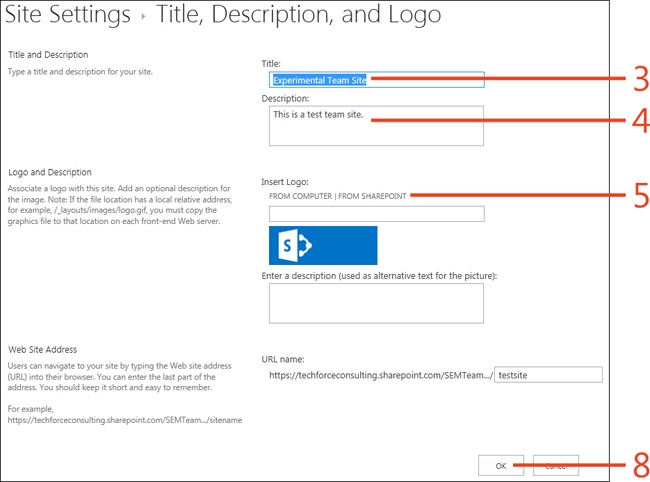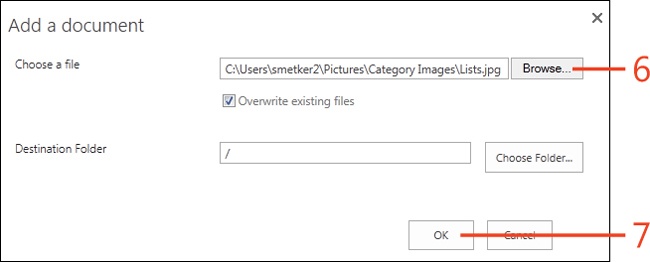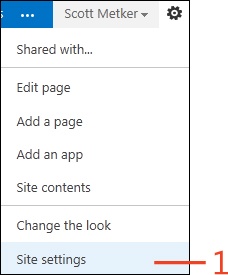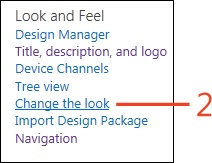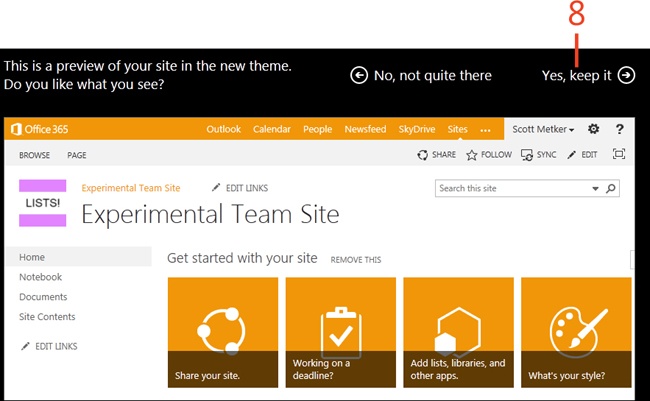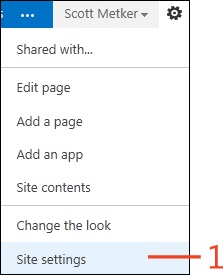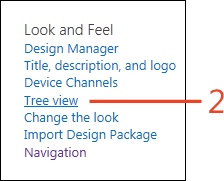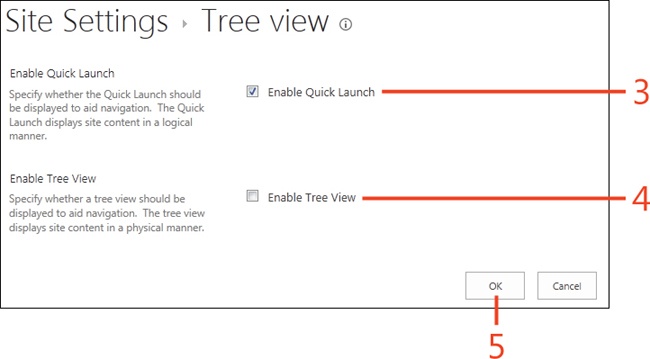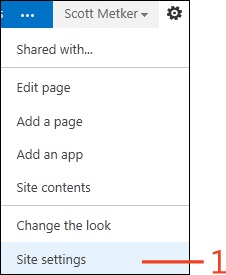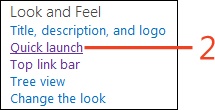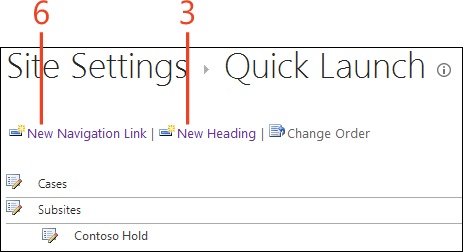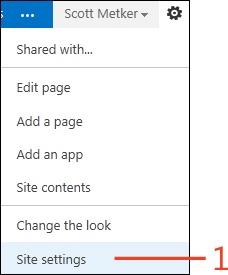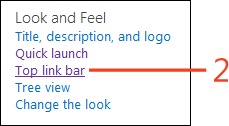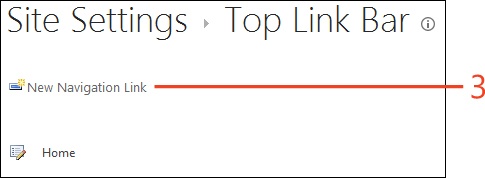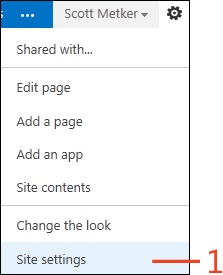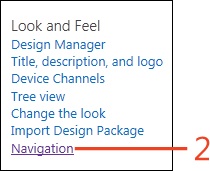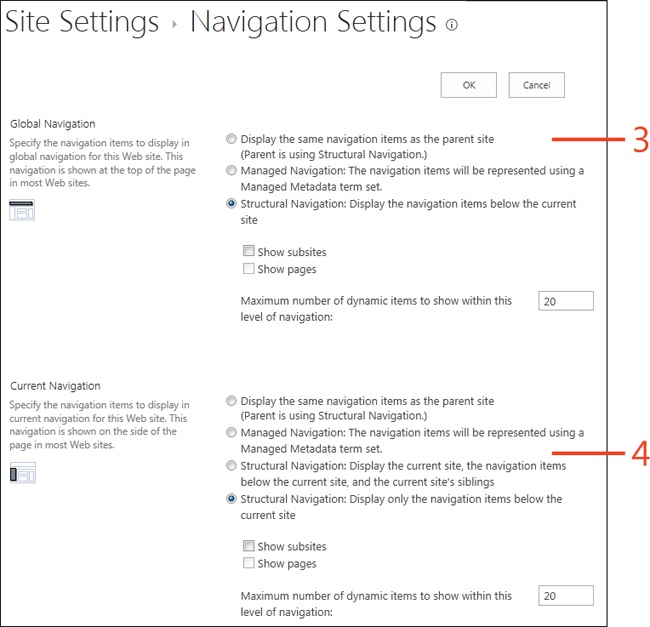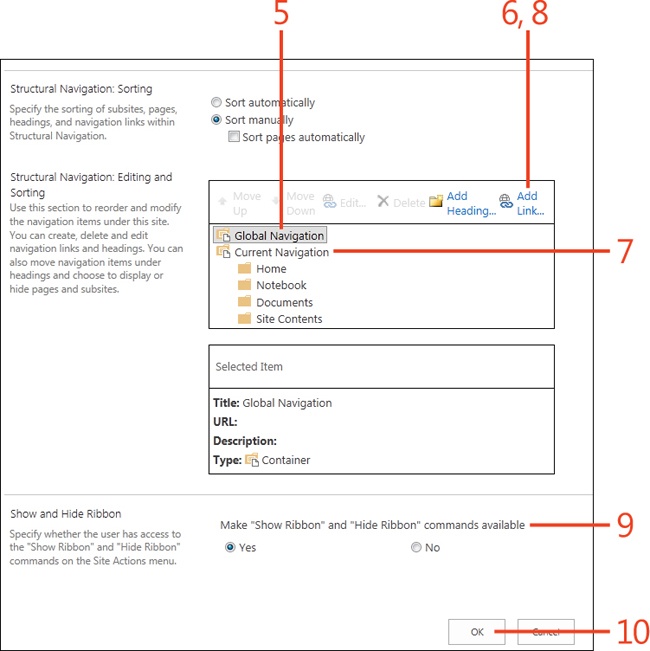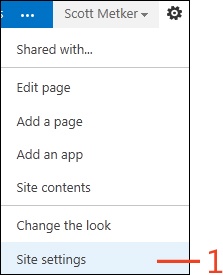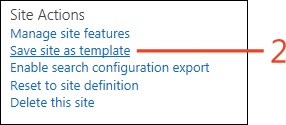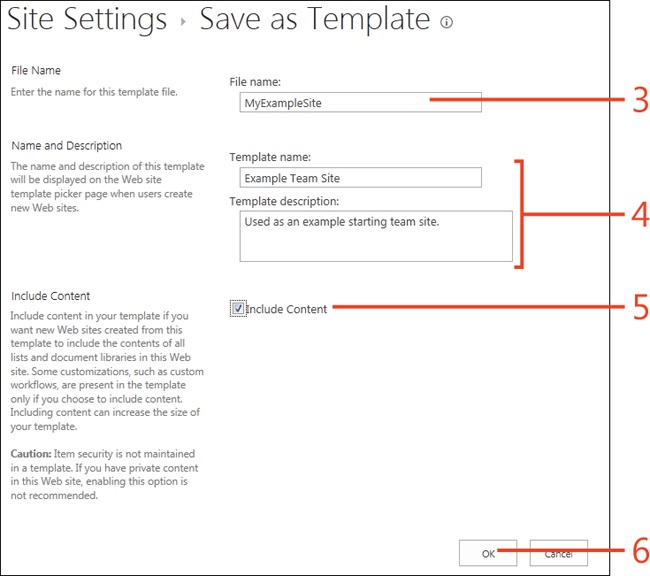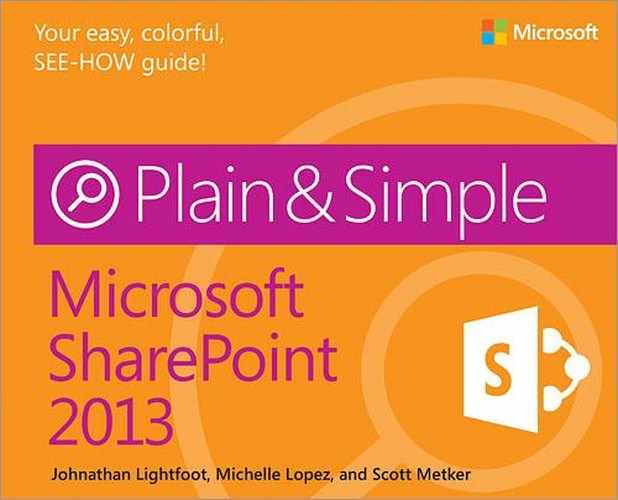 3. Getting started with SharePoint sites
by Michelle Lopez Johnathan Lightfoot and Scott Metker
Microsoft SharePoint 2013 Plain & Simple
3. Getting started with SharePoint sites
by Michelle Lopez Johnathan Lightfoot and Scott Metker
Microsoft SharePoint 2013 Plain & Simple
- Dedication
- Special Upgrade Offer
- Acknowledgments
- 1. About this book
- 2. What’s new and improved in SharePoint 2013
- Creating a new site
- Customizing the interface
- Using the Office Store
- Creating an asset library
- Adding a thumbnail to a video
- Using SkyDrive Pro
- Using the timeline feature for tasks
- Mentioning a colleague feature
- Expanding My Tasks settings
- Previewing search documents
- Using the Community Site template
- Creating badges
- Creating an eDiscovery Center
- Using Visual Designer for workflows within SharePoint Designer
- 3. Getting started with SharePoint sites
- Understanding sites
- Creating a SharePoint site from a template
- Locating content on a site
- Changing your site’s title, description, and logo
- Changing the look and feel of a site
- Changing the navigation tree view settings
- Editing the Quick Launch bar on a nonpublishing site
- Editing the Top Link bar on a nonpublishing site
- Editing publishing site navigation
- Saving a site as a template
- 4. Organizing and managing information
- 5. List and library essentials
- Using your apps
- Creating and deleting lists
- Adding and editing list items
- Deleting and restoring list items
- Creating list columns
- Editing and deleting list columns
- Using list and column validation rules
- Sorting and filtering lists
- Creating and selecting a list view
- Sorting or filtering a list view
- Organizing items by using folders
- 6. Working with documents
- Managing documents with a document library
- Customizing document templates
- Uploading multiple documents
- Requiring and displaying document check out
- Checking documents in and out
- Configuring documents with document IDs
- Using document IDs
- Moving documents
- Copying or sharing documents
- Configuring document sets on a site
- Configuring document sets on a document library
- 7. Working with media
- 8. Using SkyDrive Pro
- Accessing your SkyDrive Pro account
- Saving files to SkyDrive Pro
- Saving files to be accessible only to you
- Sharing SkyDrive Pro files
- Following SkyDrive Pro documents
- Locating followed documents by using the newsfeed
- Locating followed documents by using SkyDrive Pro
- Synchronizing SkyDrive Pro to your local computer
- Discontinuing sync between SkyDrive Pro and your local device
- 9. Using information management policies
- Introduction to information management policies
- Information management policy inheritance
- Accessing site content type information management policies
- Accessing list information management policies
- Creating content type retention policies on a library
- Setting library or folder-based retention schedules
- Creating auditing policies
- Viewing an audit report
- 10. Organizing people and work
- Creating a project schedule by using a tasks list
- Adding tasks
- Viewing tasks in a Gantt Chart
- Adding multiple tasks and subtasks
- Creating a calendar list
- Scheduling events on the calendar
- Using the issue tracking list
- Creating a discussion board
- Participating in a discussion
- Rating discussions
- Connecting a discussion to Microsoft Outlook
- Synchronizing project tasks with Microsoft Project
- 11. Using Web Parts
- 12. Using SharePoint with Office 2013
- 13. Collaborating with blogs
- 14. Security within SharePoint 2013
- 15. Using personal sites and social networking
- 16. Searching for information
- Creating a Search Center
- Searching from a Search Center
- Preparing your site for search
- Searching site content
- Using search refinement
- Previewing search results in Search Center
- Using advanced search
- Working with search alerts
- Setting your search preferences
- Promoting search results
- Excluding site content
- Excluding document libraries and lists from search
- Excluding site columns from search
- Maintaining search configurations
- 17. Community portals and sites
- Creating a community site site collection
- Creating a community site subsite
- Adding moderators to community sites
- Adding users to community sites
- Managing your community settings
- Working with categories
- Working with badges
- Assigning badges to members
- Enabling site-wide reputation tracking
- Viewing badges and reputation scores for a member
- Creating and editing discussions
- Replying to a discussion
- Searching for discussions
- Tracking discussions in progress
- Managing replies
- Moderating discussions
- Reviewing posts submitted for moderation
- 18. Automating tasks with workflows
- Associating workflows with lists
- Associating workflows with content types
- Starting workflows on documents
- Checking the status of a running workflow
- Creating a list workflow in SharePoint Designer
- Editing workflows
- Introducing Microsoft Visio integration with SharePoint workflows
- Switching to the visual designer
- Creating workflows in Visio 2013
- Importing Visio workflows into SharePoint Designer
- 19. SharePoint and eDiscovery
- A. About the authors
- Index
- About the Authors
- Special Upgrade Offer
- Copyright
Chapter 3. Getting started with SharePoint sites
Microsoft SharePoint 2013 is a web-based platform that supports a number of collaboration-related activities for teams. It includes document management, blogging, project planning, and auditing and security components. In fact, it can be quite difficult to get a sense of all of the features of the application.
A good way to get started with SharePoint is to start working with one of the out-of-the-box SharePoint sites. A SharePoint site is a single website that can be used to organize information that has a common purpose. For example, it might be a team site on which you store documents that your team uses, or it might be a collaboration site where your group stores discussions, questions, and answers.
An immediate benefit to using SharePoint sites is that all of your departmental information is in a single place. You can collaborate, store documents, search for content, and plan projects all from the same site. Gone are the days of having to search through email for file attachments, accessing many different file shares for documents, or trying to guess where the most current version of a document resides.
Understanding sites
Usually, a SharePoint administrator performs the installation, configuration, and deployment of SharePoint 2013 throughout your organization. Part of this process is establishing something called the top-level site (also referred to as a site collection). It is through the site collection that subsites (or sites) are created. It is beyond the scope of this book to go into detail about the various SharePoint implementation scenarios; however, remember that once the top-level site is created, subsites can then be created.
Each site has a site administrator (or two) assigned to it. The site administrator’s duties can include granting access to the site, creating lists and libraries, and creating additional sites, to name a few. One of the great things about SharePoint is that it gives you the ability to assign various responsibilities to assorted people within your team. After a site administrator has the web address for a site, she can customize the site and apply security settings that permit or deny people access to it.
Access a SharePoint site
In your browser, type the web address for the SharePoint site that you want to access and then press Enter.
Try This
If you have a SharePoint site that you can access, type the site’s web address into your browser bar.
The templates listed in the tables that follow are supplied as part of an out-of-the-box SharePoint installation. You might have additional templates available in your environment if your administrators have installed third-party applications, performed their own development on the site, or simply saved customized templates for common configuration. You might have fewer templates available than are presented here due to your particular licensing of the SharePoint software. Also, some templates might only be used for creating new site collections, which can only be created by certain administrative personnel. If you do not have administrative access, you can ask your IT staff to create a new site collection for those templates which may not be used as subsites.
Template name | Description |
Collaboration templates | |
Team Site | A site designed for team or workgroup interactions, including tracking of documents and a basic newsfeed. |
Blog | A site intended for an individual or group to publish blog posts around a particular area. |
Developer Site (site collection use only) | A site for developers to work with Office products. |
Project Site | A site intended for managing and collaborating on projects, including tracking status of issues and artifacts related to project deliverables. |
Community Site | A site on which members can contribute to discussions based on common interests. This template supports discussions and threaded replies as well as tracking of badges and reputation for site members. |
Enterprise templates | |
Document Center | A site for managing documents within a corporate enterprise. |
eDiscovery Center (site-collection use only) | A template for an eDiscovery Center, where many eDiscovery cases can be created by which designated staff can query for documents subject to legal discovery, initiate legal holds, and create export packages for transmission of discovery-related materials to designated legal personnel. |
A template designed for management of regulated documents and for managing routing of files that are changed or deleted that are subject to records retention rules. | |
Team Site – SharePoint Online configuration | A team site tailored for extension by organization members that supports adding sites and extending the site to external members. |
Business Intelligence Center | A site designed for presenting business intelligence reporting capabilities to end users. |
Enterprise Search Center (recommended by Microsoft for site-collection use only) | An advanced search center that supports customization of page content and search extensions for page content above and beyond the supplied basic search, people search, conversation search, and video search results pages. |
My Site Host (site-collection use only) | A specialized site used for hosting personal profile pages. This site is generally provisioned only by administrative or IT staff. |
Community Portal (site-collection use only) | A site for publicizing and discovering communities. |
Basic Search Center (recommended by Microsoft for site-collection use only) | A simplified search center featuring a welcome page, search page, search results page, and advanced search page. |
Visio Process Repository | A site used to store and view Visio diagrams. |
Publishing templates | |
Publishing Portal (site collection use only) | Use this template to create large Internet sites or large intranet portals within companies. Includes access to publishing pages and approval workflows for site content, where authors can submit page changes to approvers prior to releasing on the site. |
Enterprise Wiki | Use this for creating wiki sites with easy-to-edit page formats that support authoring by multiple authors. Supports discussions and project management needs. |
Used for managing product catalog data | |
Publishing Site | Used for publishing webpages. The site includes document and image libraries for storing web publishing assets. |
Publishing Site with workflow | Used for publishing webpages on a schedule. Only sites with this template can be created under this site. |
Creating a SharePoint site from a template
SharePoint 2013 site administrators have a lot of latitude with regard to how they can create a site. They can choose to create a blank site and add different components to it, or they can employ a site template to assist them in creating some of the more common elements of the site. If you have used a template in Microsoft Word, Microsoft Excel, or any other Office program, the concept is the same in SharePoint.
A template is a starting point that you can use to quickly produce a site that has the basics of what your team needs. This saves you time, but it also ensures a certain level of consistency among SharePoint sites throughout your organization. SharePoint 2013 comes with numerous site templates that are ready to be used out of the box.
Create a SharePoint team site
On the Home page of your site, click the Settings button (the small gear icon next to the name of the logged-on user). On the menu that appears, click Site Contents.
On the Site Contents page, In the Subsites section select the New Subsite link.
On the New SharePoint Site page, type a title and description for the case.
Type a URL for the site, relative to the root site.
Choose a language for your site.
Choose the Team Site template (located on the Collaboration tab).
Choose user permissions for the site.
Select navigation options for the site.
Click Create.
Tip
If you are trying to create a site from a previously saved template, you must select the Custom tab during template selection to see this template.
The Team Site template offers a good sampling of the capabilities in SharePoint 2013. As such, this template is one that you will most likely see deployed in several locations of your organization. The Team Site template includes a newsfeed, document library, and site asset library, already configured and ready for use. With these sites configured, you and your team can quickly set up and begin collaborating on your projects. After you have a team site set up, it’s good to go over where everything is located. The following list gives you a brief tour:
The Top Link bar shows the global navigation that can be inherited from parent sites and makes it possible for you to immediately jump to those other sites.
The Ribbon bar lets you click and expand the displayed items into a full ribbon bar with additional buttons and functions. In some cases, the ribbon bar is automatically expanded when you click on certain assets in SharePoint.
The site logo displays a graphic logo that represents your site. Clicking this logo anywhere on the site takes you to the Home page of the site.
The site title is the title of the site. It can be changed by the site collection owner.
The Getting Started Web Part shows a tiled menu for rapidly accessing certain maintenance functions on the site. It is intended to assist new users in accessing important site functionality.
With the Search box, users can enter queries and link to a search site associated with the current site. Searches can be scoped to the current site or the entire SharePoint farm.
The Share link makes it possible for users to share the site with other users by sending an email and adding selected users to appropriate site permission groups.
With the Follow link, users can configure the site so that it appears in their My Sites as one that they want follow.
Using the Sync link, users can synchronize the site content locally to their hard disk (for offline access).
User can click the Focus link to dismiss the title and navigation elements on the current page to “focus” on the page content.
The Documents App Part makes it possible for users to view the contents of the documents library that is automatically provisioned when the site is created. Users can also upload new documents to the library directly from the Home page.
The Newsfeed Web Part makes it possible for users to view recent postings by other users on the Home page as well as allow the current user to submit snippets of plain-text content.
Locating content on a site
If you are the owner of a SharePoint 2013 team site, there are two primary areas of the site that you will commonly access while maintaining the site: the site contents and the site settings. Using the site contents link, you can quickly see all of the libraries, applications, and lists on the site as well as any subsites located under the current site. You can also use the site settings link to access the administrative menus with which you configure and maintain the site.
View site contents
Changing your site’s title, description, and logo
One of the simplest formatting changes that you can make to your SharePoint 2013 site is to change its title, description, or logo. There is a separate link on the Site Settings page specifically designed for this change. Both the title and description fields are featured in pages throughout the site, and they can appear within search results, as well.
Change a site title, description, and logo
On the Home page of your site, click the Settings button (the small gear icon next to the name of the logged-on user). On the menu that appears, click Site Settings.
On the Site Settings page, in the Look And Feel section, click the Title, Description, And Logo link.
On the Title, Description, And Logo page, verify or change the title entry, as desired.
Verify or change the description of your site.
In the Logo And Description section, click the From Computer link.
In the Add A Document dialog box, click the browse button and locate the file on your computer to upload as the new logo.
Click OK to dismiss the dialog box.
Click OK to save your title, description, and logo changes.
Changing the look and feel of a site
The chances are good that when you start to use your SharePoint site, you will want to customize a few things to meet the specific needs of your team. Fortunately, SharePoint 2013 supports a number of out-of-the-box formatting options (as well as supporting personalization to each option). Using these options, you can tailor your site match your corporate or departmental colors, change layouts, or simply change fonts and logos.
Change the look and feel of your site
On the Home page of your site, click the Settings button (the small gear icon next to the name of the logged-on user). On the menu that appears, click Site Settings.
On the Site Settings page, in the Look And Feel section, click the Change The Look link.
On the Change The Look page, click one of the displayed templates.
On the Change The Look page for the template you selected, choose a different color scheme.
Select a non-default site layout for the template, if you want.
Select a non-default font for the template, if you want.
Click Try It Out.
Click Yes, Keep It to save your changes.
Changing the navigation tree view settings
Depending on the purpose of your SharePoint 2013 site, you might want to modify the default navigation. Normally, SharePoint sites provide a Quick Launch bar for internal navigation and a Top Link bar that inherits from the parent site of the current site (if present). The following options describe how to customize the navigation settings within your site.
Change tree view settings
On the Home page of your site, click the Settings button (the small gear icon next to the name of the logged-on user). On the menu that appears, click Site Settings.
On the Site Settings page, in the Look And Feel section, click the Tree View link.
On the Tree View page, select the Enable Quick Launch check box to show the Quick Launch bar at the left side of your site.
Select the Enable Tree View check box to show a hierarchical, content-based view of your site immediately under the Quick Launch bar.
Click OK to save your results.
Editing the Quick Launch bar on a nonpublishing site
On nonpublishing sites (sites for which your technical staff have not activated the SharePoint Server Publishing Infrastructure feature), on the Site Settings page, you can edit the Quick Launch bar and Top Link bar separately.
Edit Quick Launch bar on a nonpublishing site
On the Home page of your site, click the Settings button (the small gear icon next to the name of the logged-on user). On the menu that appears, click Site Settings.
On the Site Settings page, in the Look And Feel section, click the Quick Launch link.
On the Quick Launch settings page, you can create another header section (under which additional links can be placed) by clicking the New Heading link. Alternatively, you can proceed to step 6 to create a link under an existing header.
On the New Heading page, type the URL and a descriptive label (which will display on the Quick Launch bar) for the heading.
When users click the heading, they are taken to the URL that you entered.
Click OK to save your new heading and return to the Quick Launch settings page.
On the Quick Launch settings page, you can create a new Navigation Link under an existing heading by clicking New Navigation Link.
On the New Navigation Link page, enter the URL and a descriptive label (which will be displayed on the Quick Launch bar) for the link.
When users click the link, they are taken to the URL that you entered.
Select the existing heading under which this link will be placed.
Click OK to save your new heading.
Editing the Top Link bar on a nonpublishing site
As with the Quick Launch menu on nonpublishing sites, you can also edit the list of linked sites that appears horizontally across the top of your site. This option is only available on sites for which your technical staff has not activated the SharePoint Server Publishing Infrastructure feature.
Edit the Top Link bar on a nonpublishing site
On the Home page of your site, click the Settings button (the small gear icon next to the name of the logged-on user). On the menu that appears, click Site Settings.
On the Site Settings page, in the Look And Feel section, click the Top Link Bar link.
On the Top Link Bar settings page, you can create a new link by clicking the New Navigation Link button.
From the New Navigation Link page, type the URL and a descriptive label (which display on the Top Link bar) for the link.
When users click the link, they are taken to the URL that you entered.
Click OK to save your new heading.
Editing publishing site navigation
If your administrative staff has activated the SharePoint Server Publishing Infrastructure feature on your root site collection, you have advanced options for changing your site navigation structure that can also be inherited by subsites. This covers both the Quick Launch bar (on the left side of your site Home page) as well as the Top Link bar (which appears horizontally across the top of your site).
Edit publishing site navigation
On the Home page of your site, click the Settings button (the small gear icon next to the name of the logged-on user). On the menu that appears, click Site Settings.
On the Site Settings page, in the Look And Feel section, click the Navigation link.
On the Navigation Settings page, choose your global navigation options.
These are applied to the Top Link bar that appears horizontally across the top of the Home page of your site.
On the Navigation Settings page, choose your current navigation options.
These are applied to the Quick Launch bar that appears vertically on the left side of the Home page of your site.
In the Structural Navigation settings section, select the Global Navigation folder to manually add new items to your Top Link bar.
You can then use the Add Link button to add additional links.
In the Structural Navigation settings section, select the Current Navigation folder to manually add items to the Quick Launch bar.
You can then use the Add Link button to add additional links.
In the Show And Hide Ribbon section, select whether to allow users to access the Show and Hide ribbon buttons on the toolbar.
Click OK to save your results.
Saving a site as a template
After you create a site and set it up the way you want it, you might decide to use it as a template for sites that you create in the future. By saving your newly created site as a template, you can make deploying sites like it much easier because you don’t need to re-create them manually.
When you save a site as a template, any lists, libraries, or other objects you have added are also saved. You also have the option of saving some content with the template. For example, maybe in each of your newly created sites you want to have certain forms uploaded to specific libraries during the site creation process.
Save site as a site template
On the Home page of your site, click the Settings button (the small gear icon next to the name of the logged-on user). On the menu that appears, click Site Settings.
On the Site Settings page, in the Site Actions section, click the Save Site As Template link.
On the Save As Template page, type a file name for your site template.
If you later export the template to a file, this will be the default file name.
Type a name and description for the template.
If you want to also save all content stored in document libraries on your site in the template, select the Include Content check box.
Click OK to save the template.
On the Operation Completed Successfully page, click OK.
-
No Comment
